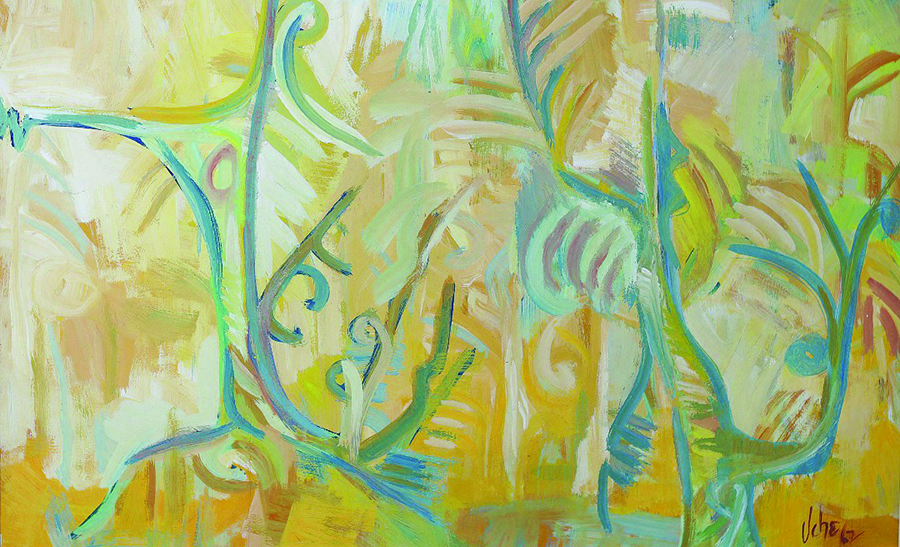Jess Castellote
Sometimes I find myself wondering why we instinctively tend to fall silent in certain places—a museum, a church, a cemetery. No one tells us to keep quiet, yet we do. The silence is not enforced; it simply emerges, as if the space itself asks for it, and we, without thinking, respond. What is it about these places that draws us into stillness? Perhaps it’s because they hold more than what we can immediately see. A museum carries stories, ideas, and echoes of human creativity left behind in objects and images. A church gathers prayer, gratitude, doubt, contrition, and longing within its walls. A cemetery serves as a quiet archive of lives, each grave marking a chapter that once breathed, laughed, struggled, and loved. In all of them, silence becomes a way of listening, not just with our ears, but with our entire being.
It happens in other places too. In libraries, we instinctively whisper—not out of fear of being silenced, but because the atmosphere invites quiet. In them, it feels like thoughts are floating around and we don’t want to scatter them. When we step into a quiet forest, its silence wraps around us, settling deep within. When watching the sun rise, when sitting by the sea, when we enter a room where someone is sleeping peacefully, we instinctively soften our voices and slow our steps. Not because we are scared, but because something deserves respect. But this kind of attention is sometimes hard to find. So often, our eyes are pulled downward toward the insistent glow of screens in our hands. We check, tap, scroll, swipe, type, flick, zoom, browse, and click, again and again, in an endless cycle of digital consumption. These places may be practically begging us to be present, but we are somewhere else entirely. The more we do this, the harder it becomes to stay present with what is complex, subtle, ambiguous, or slow to reveal itself.
The phone promises to connect us, but it usually just steals our attention instead. It fills up the space where silence might have entered, and along with it, the chance to see more deeply, feel more authentically, understand more completely, and ultimately enjoy more richly. This represents more than a simple distraction; it is a fundamental shift in how we engage with the world. We have become accustomed to immediate gratification, to information delivered in bite-sized pieces, to experiences that can be captured and shared instantly. But some of life’s most profound encounters resist this treatment. They require time, patience, and silence.
Maybe when we allow ourselves to fall silent, something deep in us awakens. We notice details that were always there, but we previously overlooked. We pay attention not just to the obvious, but to the subtle interplay of elements that create meaning. The world becomes less noisy and, paradoxically, more alive. We might suddenly see a previously unnoticed detail in a painting—the way light catches the edge of a fabric, the emotion captured in the turn of a hand. We notice how afternoon light passes through a window, creating a temporary artwork on the wall. In a cemetery, we feel the profound weight of absence, the stories held in stone. In nature, we hear the complex symphony in what we initially perceived as silence—the rustle of wind through leaves, the distant call of birds, the subtle sounds of life continuing its seasonal rhythms. Silence sharpens our senses and deepens our presence in ways that constant stimulation cannot. It creates space for contemplation, for the kind of slow processing that allows experiences to settle into wisdom rather than simply accumulating as data.
Art, in particular, often needs silence to be fully encountered and appreciated. Not because it cannot compete with noise, but because it speaks in an entirely different language—one that bypasses our analytical minds and speaks directly to our souls. A painting or sculpture doesn’t raise its voice to demand attention. In silence, we meet the artwork halfway. We are not merely looking at it as passive observers; we are allowing it to look back at us, to affect us, to change us in subtle ways. This mutual engagement is perhaps why museums naturally draw us into quiet reverence. In silence, a work of art can unfold slowly, like a story told with no need to rush toward a conclusion. We begin to feel its texture—not just physical, but emotional and spiritual. We trace its moods, sense the hand and mind behind its creation, we imagine the struggles and revelations that brought it into being. In that silent exchange between viewer and artwork, something inside us shifts. We don’t leave with simple answers or easy interpretations, but with a fuller sense of having truly seen something.
This capacity of art to demand inner stillness, not just outward silence, is often overlooked in our hurried contemporary lives. So much of what we consume today is designed for speed, for instant reaction, for quick scrolling and rapid consumption. Content is optimised for engagement metrics rather than meaningful encounter. But real art, the kind that has the power to change us, refuses to play that game. Great art stands still and waits. It doesn’t try to grab our attention with flashy effects or manipulative techniques; instead, it asks for our presence, our full engagement, our willingness to be changed by the silent encounter. Even works about loud, harsh subjects require a kind of inner quiet to fully register their impact. Without that contemplative space, we merely skim the surface. We might react emotionally, but we don’t truly absorb the work’s deeper meanings.
One of the most remarkable things about museums is their potential to teach this increasingly rare skill of deep, silent looking. They represent some of the few remaining public spaces designed not primarily to entertain us or sell us something, but to encourage us to slow down, to engage meaningfully with the non-verbal, the visual, the tactile dimensions of human experience. But even in museums, we often see visitors rushing through galleries as if trying to check items off a list, snapping quick photos for social media, taking selfies with famous works, reading wall texts more attentively than they observe the artworks themselves.
Creating space for this kind of inner silence takes practice, especially when everything around us profits from keeping us distracted. It’s not about going blank or shutting out the world. It’s about tuning in deeper to ourselves, to others, to things that are right there but are usually overlooked. Inner silence makes it possible to truly see a painting rather than simply recognizing it, to truly hear music rather than having it serve as background noise, to sit with grief or wonder without immediately rushing to explain or fix or move past the experience.
It’s the kind of silence that doesn’t shut out the world but opens us more fully to it. This openness requires vulnerability—the willingness to be changed by what we encounter, to have our assumptions challenged, our perspectives expanded, our hearts touched in unexpected ways.
We have at the museum at Pan-Atlantic University a couple of large abstract paintings that, at first glance, might feel confusing or emotionally cold. But if we spend genuine time with them—not just a quick look before moving on, but really staying present—something deeper may begin to stir within us. These responses emerge from our silence and receptivity, from our willingness to be still enough to let the work do what it was created to do: work on us, change us, expand us.
This is also why silence can, at times, feel uncomfortable. It slows us down when we are accustomed to speed. It forces us to face what is inside: our impatience, our uncertainties, our boredom, our unexamined fears and desires, all the stuff we usually stay too busy to notice. In silence, it is harder to escape into busyness or distraction, and easier to face ourselves as we are, not as we imagine ourselves to be. But if we can tolerate this discomfort, art becomes one of the few remaining forces in our culture that can meet us in that vulnerable space and gently lead us through it toward something like wisdom or peace or expanded understanding.
So, what does silence truly allow us to do? It lets us breathe more deeply, reflect more honestly, receive more openly. It creates space for wonder, for memory, for dreams, for prayer, for rigorous self-examination, for connection with something larger than our individual concerns and anxieties. In silence, we don’t simply stop speaking—we begin to feel more authentically, to perceive more clearly, to understand more completely. And in that quiet, something shifts within us. Not loudly, not quickly, but more deeply and with more lasting meaning. We discover that silence isn’t empty space to be filled, but rich territory to be explored. In learning to be silent, we learn to be present, and in learning to be present, we learn to be fully alive. Perhaps this is why certain spaces call us naturally to silence. They recall something in us that we sometimes forget: our capacity for depth, for reverence, for the kind of attention that changes both the observer and the observed. In honouring that call to silence, we honour what is most essentially human in ourselves.
•Dr Castellote is the Director of the Yemisi Shyllon Museum of Art. Pan-Atlantic University

















Leave a comment